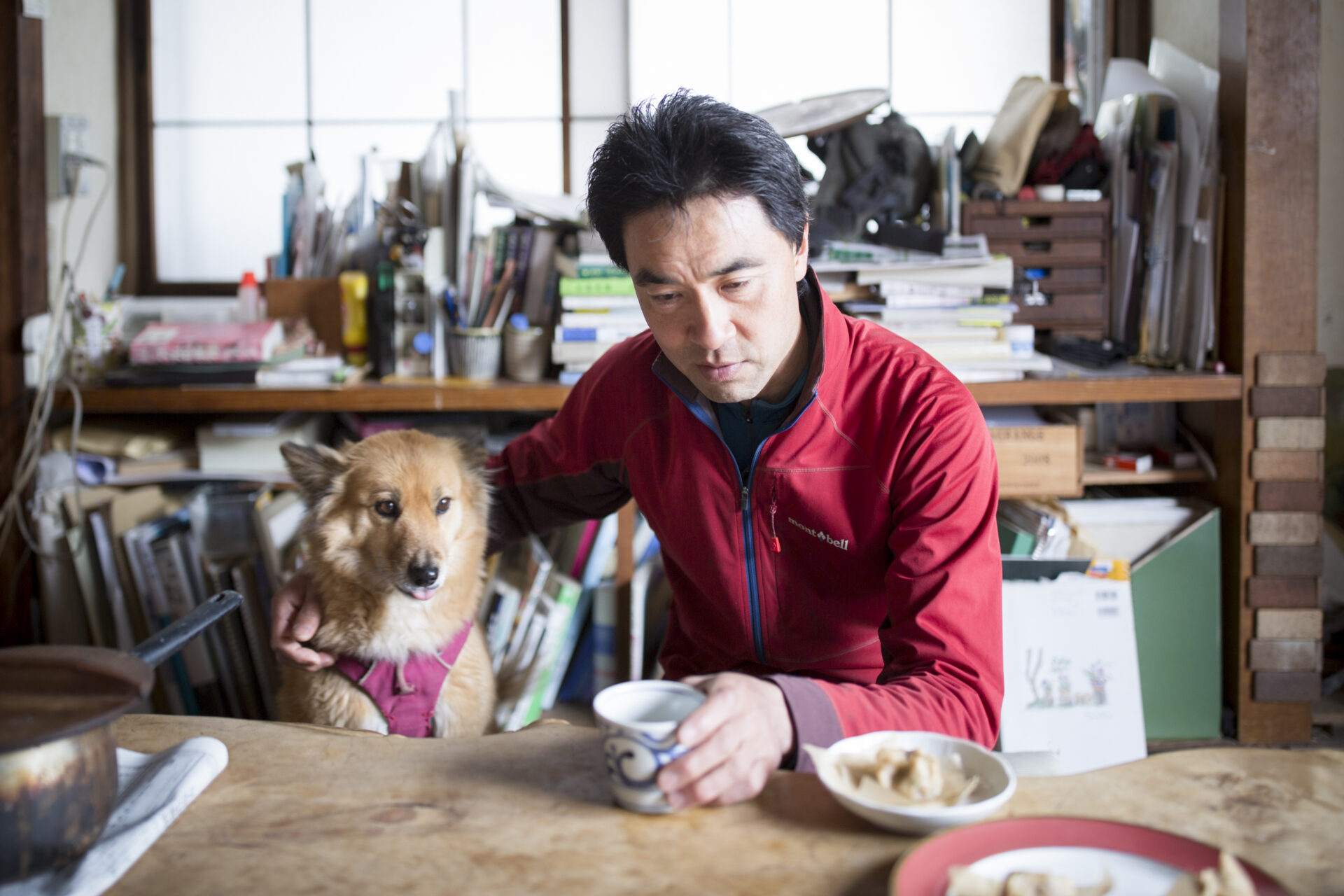Bunsho Hattori is a mountain climber who has a unique style of climbing called “survival mountain climbing” which he started in his thirties. His style is to walk alone in the mountains for long periods of time with as minimal equipment and food as possible.
His dedication to his style, in which he relies solely on his own means to survive in nature, eventually led him to a lifestyle of hunting and living self-sufficiently in an abandoned village. How does such a person define what it means to be alive? What does he prioritize in his daily life to maintain his physical and mental strength?
We visited him in order to find out more about his philosophies and practices.
Life lessons learned from bamboo shoot digging
From the backyard of his house which is located on a slope, a narrow path leads into a bamboo grove.
“This is where I keep my hoe hidden.” Bunsho Hattori takes hold of his hoe as he looks around the bamboo grove. One after another, he finds bamboo shoots poking their heads out of the ground.
“Even near a city like this, there are quite a lot of edible things you can forage. This time of year you can find bamboo shoots, Japanese garlic and Japanese honeysuckle.”
Carefully digging out the soil around the bamboo shoots so as not to damage them, Hattori strikes the root with one stroke and pulls them out.
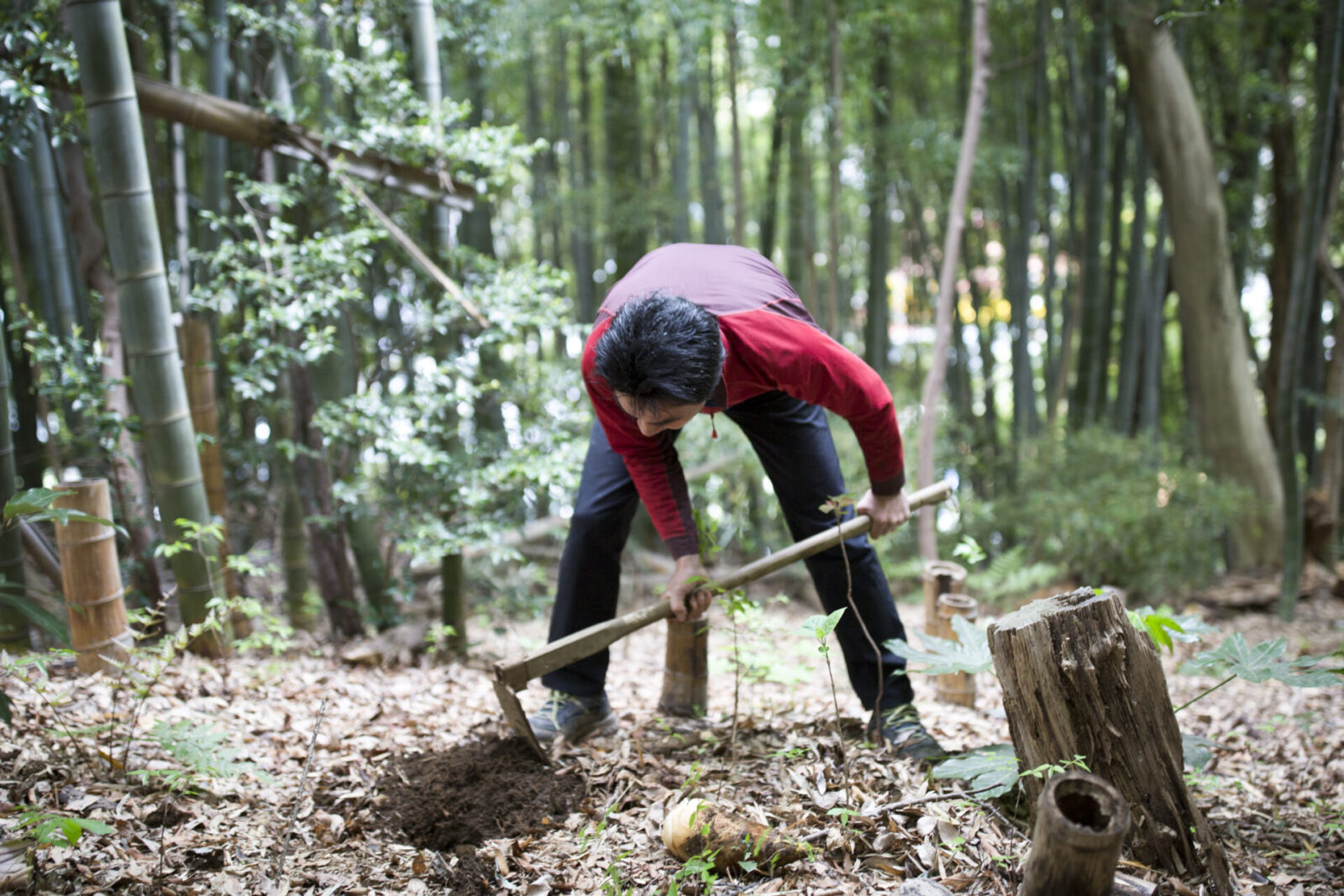
After 30 minutes of digging bamboo shoots with Hattori, we had harvested more than we could carry.
Before I knew it I was covered in dirt and my back was drenched in sweat.
Hattorri laughed as he said, “Digging bamboo shoots is quite cumbersome, isn’t it? But perhaps that is what it means to be alive.”
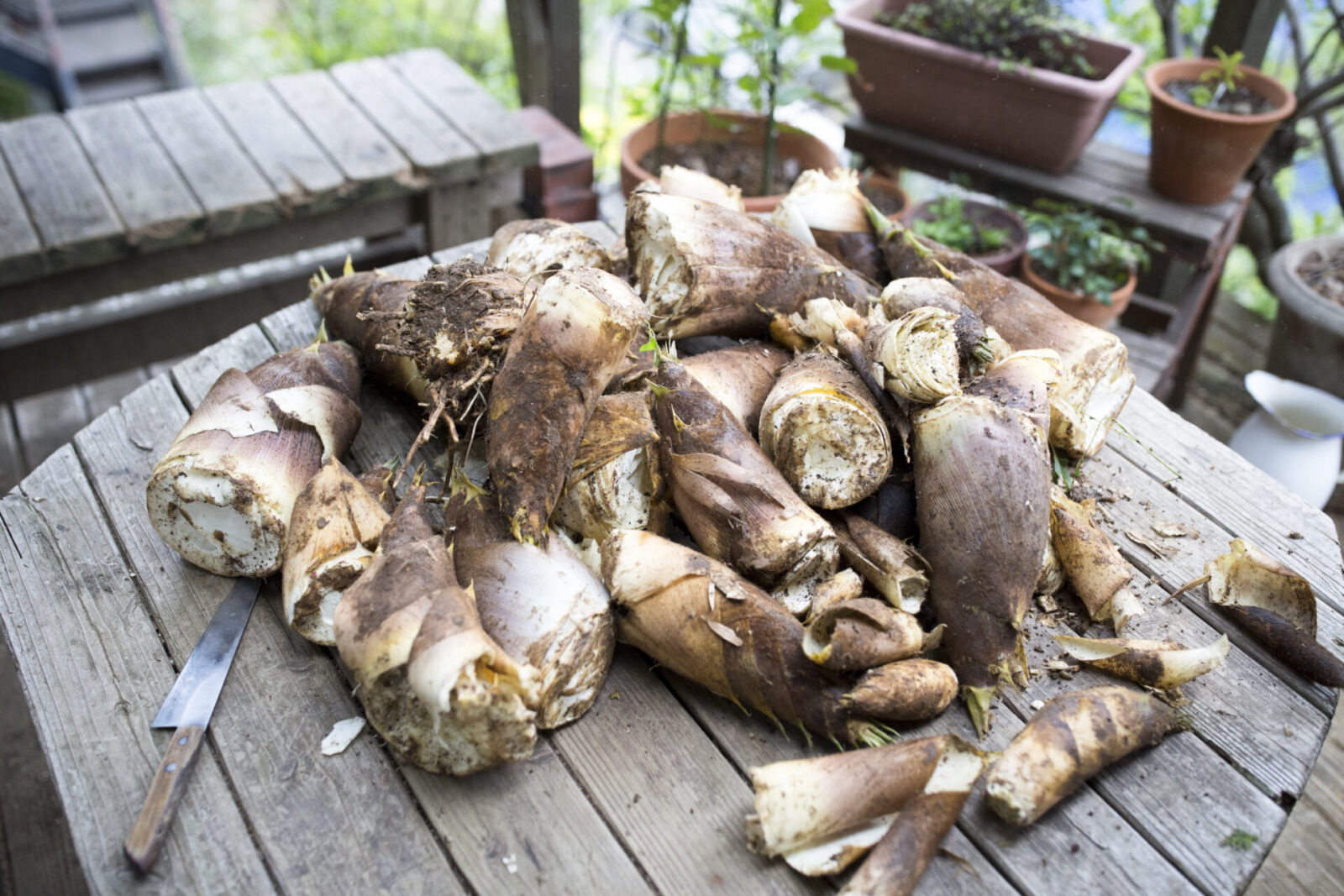
Survival mountain climbing, where you and nature become equals
Bunsho Hattori was born in Yokohama in 1969. He began taking mountain climbing seriously after joining the Tokyo Metropolitan University’s Wander Vogel Club.
Hattori began practicing survival mountain climbing in 2000 after completing a series of extreme endeavors, including climbing the world’s second highest peak K2 and crossing the Kurobe Mountains in winter.
In survival mountain climbing, the climbers bring along as little equipment and food as possible and walk in the mountains for long periods of time while surviving self-sufficiently. The food that they do carry is a minimal amount of rice, some seasonings and tea. They do not carry cell phones, tents, flash lights, watches or fuel.
They drink water from streams, catch fish and frogs for food, walk along pathless roads and sleep by a campfire.
Hattori aims to travel in the mountains as just another animal that survives in the natural environment.
His style is distinctively different from mountain climbing in which one treks along well managed trails and sleeps in tents or mountain huts, or alpine climbing where one uses the most advanced gear to climb the slopes of steep mountains.
“I use my own strength alone to lift myself up the mountain and then bring it back down. Enjoying each step of this process is what brings me joy in mountain climbing. In our modern world, there are too many things that rely on the strength of other people, such as high-tech gear and well maintained trails. It is difficult to face nature on equal terms using your own strength alone. As I thought about how I could achieve that, I came up with the style of survival mountain climbing.”

The ideas behind the style of survival mountain climbing is influenced by the philosophies behind free climbing.
Free climbing is a form of rock climbing where one does not rely on any gear or tools and climbs using only one’s own hands and feet. In Hattori’s book, he repeatedly talks about “climbing without cheating,” and by eliminating the factors that rely on the strength of other people, he has refined his own style of survival mountain climbing.
The ever-changing natural world illustrates life itself
Hattori has done a number of survival mountain climbing expeditions including in the Japanese Alps, Hokkaido and the Tohoku Mountains. The length of one expedition is between one week to 10 days long.
“When I first gave survival mountain climbing a try, I found it to be really fun. In fact, it is not so difficult to go into the mountains for about a week with nothing and survive. All you have to do is build a roof, make a fire and sleep. However, when you add the elements of travel and mountain climbing, it becomes more difficult and much more interesting.”
“When you travel in the mountains, you are exposed to various unpredictable and sudden changes in the environments and one danger after another. I think these stimuli produce chemicals in the brain that create a kind of high. If I were to describe it with one word, it is like a ‘live performance.’ This spontaneity is very important and I think it is synonymous with what it means to be alive.”
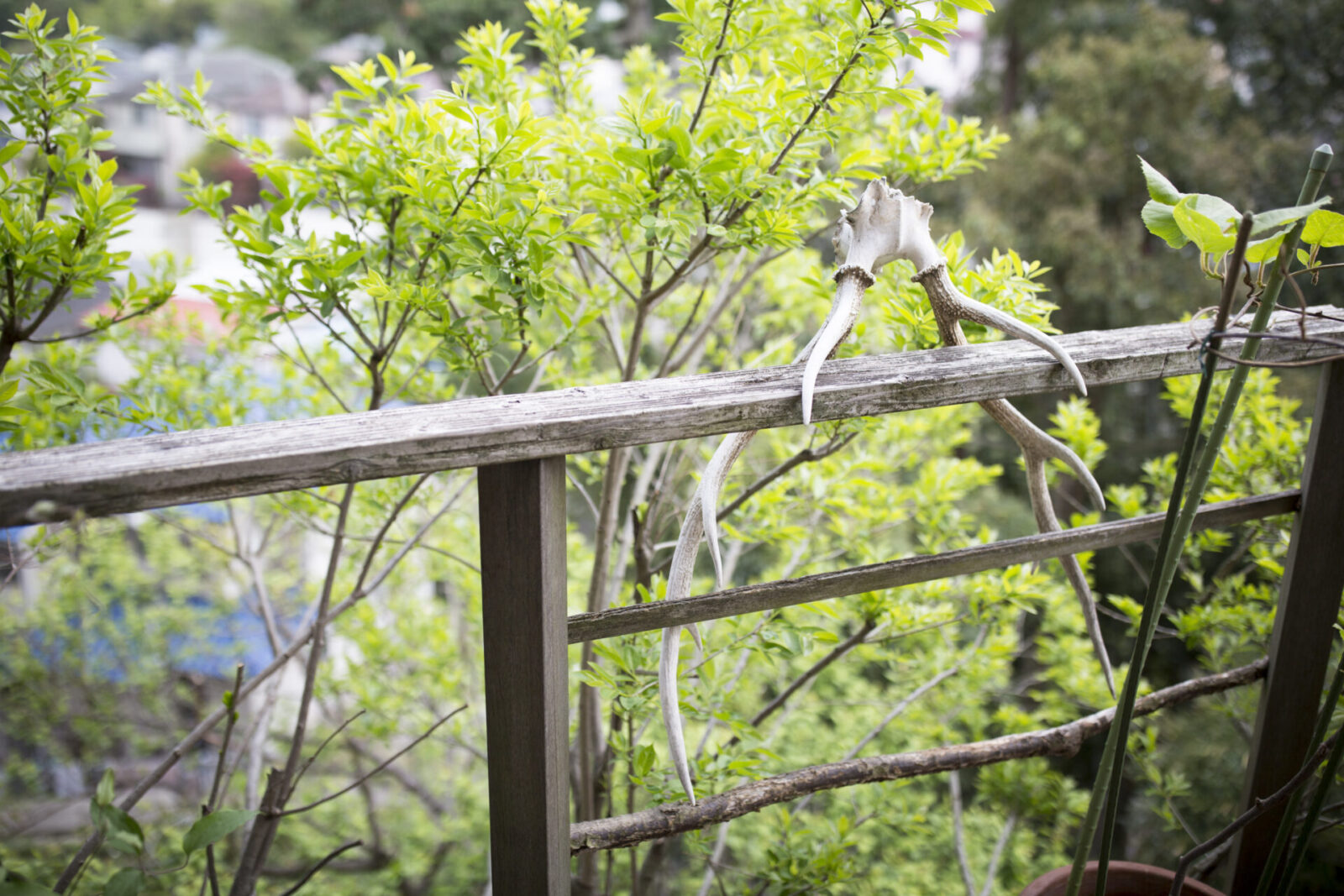
Of course, there are times when the changes in the environment creates a life or death situation. Even though Hattori faces this risk of death with each endeavor, he continues to do survival mountain climbing.
“When I am faced with a dangerously high wall of rocks, a part of me wants to climb it quickly and get it over with, but another part of me gets excited by the possible disastrous situations that could occur, like if a sudden snow storm were to come as I climb it. Of course, I always act in a way that avoids risk and danger, but there is a part of me that looks forward to situations where I would be forced into a state of total concentration.”
“Many extreme mountain climbing endeavors are somewhat illogical and unreasonable and they seem impossible at the planning stages, not just survival mountain climbing. For example, climbing a rock wall where you may slip and fall, or climbing a mountain in deep winter with minimal gear is all quite ridiculous if you think about it.”
“When we enter a mountain, we still take that unreasonable and illogical plan and try to achieve it as rationally and logically as possible. This is the big contradiction that exists in mountain climbing. We go into the mountain to get lost, but our goal is to come back without getting lost. That is what makes it fun.”
Maintaining physical and mental strength
It is not an easy task to maintain a positive mind in the both physically and mentally demanding mountains. Surely there is a need to create time to refresh and unwind the pressure that builds up in the mind and body.
Hattori says that when he is in the mountains, he often drinks chai first thing in the morning and at the end of the day.
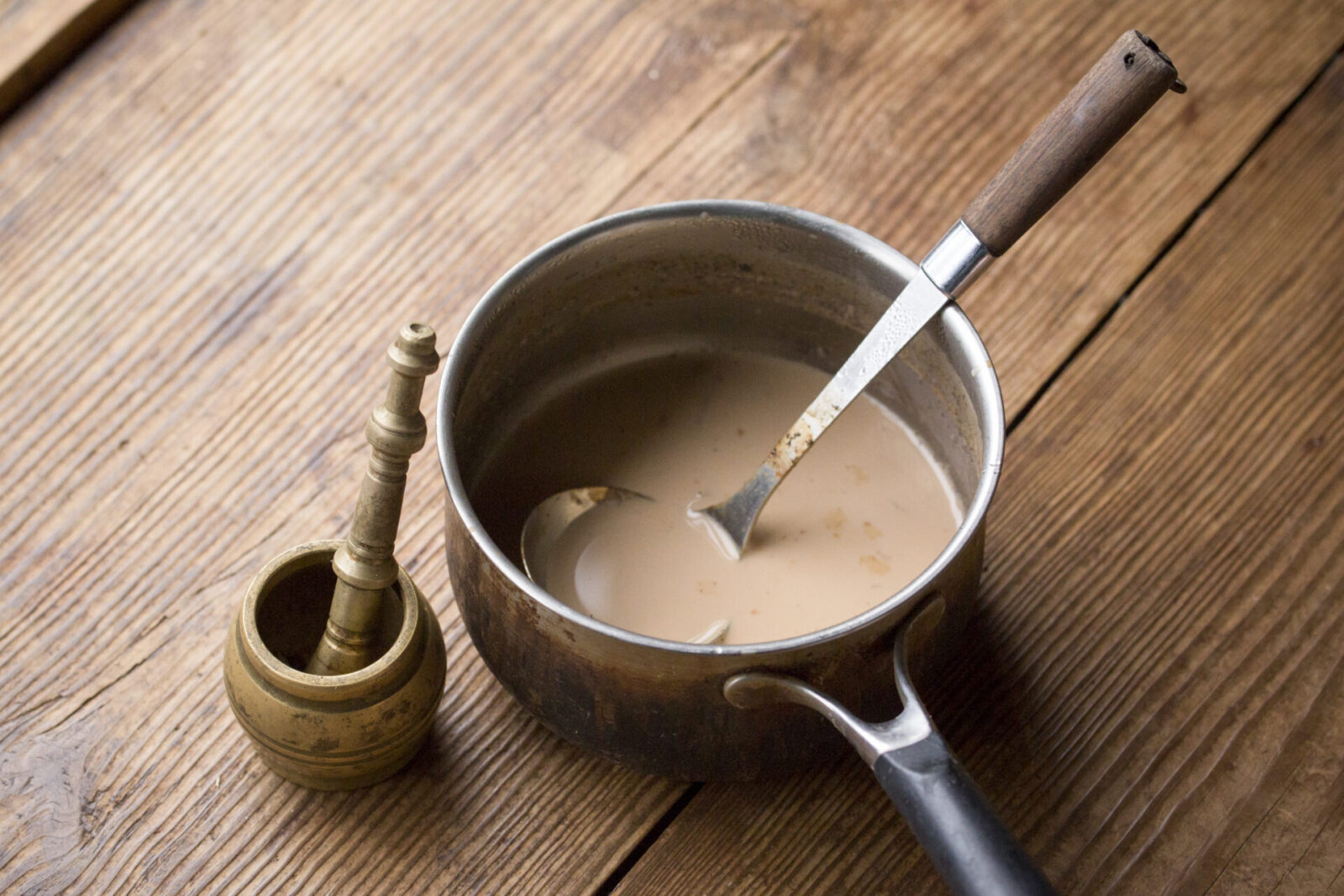
“Unlike sports like soccer and rugby, mountain climbing usually does not use up 100 percent of your energy. Our technique, knowledge, energy and experiences are all based on our physical strength, so if we use it up, it can mean death. This is why it is important to maintain about 80% performance when mountain climbing for extended periods of time.”
“In order to achieve this, how you take breaks and refresh your body and mind is very important. Sleeping, building a fire, drinking tea and eating the food I prepare all give me a sense of pleasure and I treasure these moments as much as possible.”
Hattori says even foods that provide no calories like tea are important. “If consuming it provides a sense of pleasure or puts you in a positive mindset, I believe that it provides some purpose to our living body.”
However, when it comes to survival mountain climbing, the “efficiency” of pleasure is also important.
“For example, if you can make a bed on a flat surface in five minutes, it is worth the effort to do so, but if it will take you several hours to flatten the surface, it is better to sleep on rough ground even if it is uncomfortable. If you have the urge to eat fruit but it takes too much time and risk to forage it, you should not do so.”
In survival mountain climbing, the balance between effort, effectiveness and efficiency is important, and it is also where one’s skill and knowledge come into play.
“If you are highly skilled in preparing a fire, it will require less effort for you to enjoy the pleasure of an outdoor fire. The same is true for fishing and foraging wild vegetables. One must have skills, wisdom and knowledge in order to maintain one’s physical health efficiently in the mountains. I think this is also true to living life itself.”
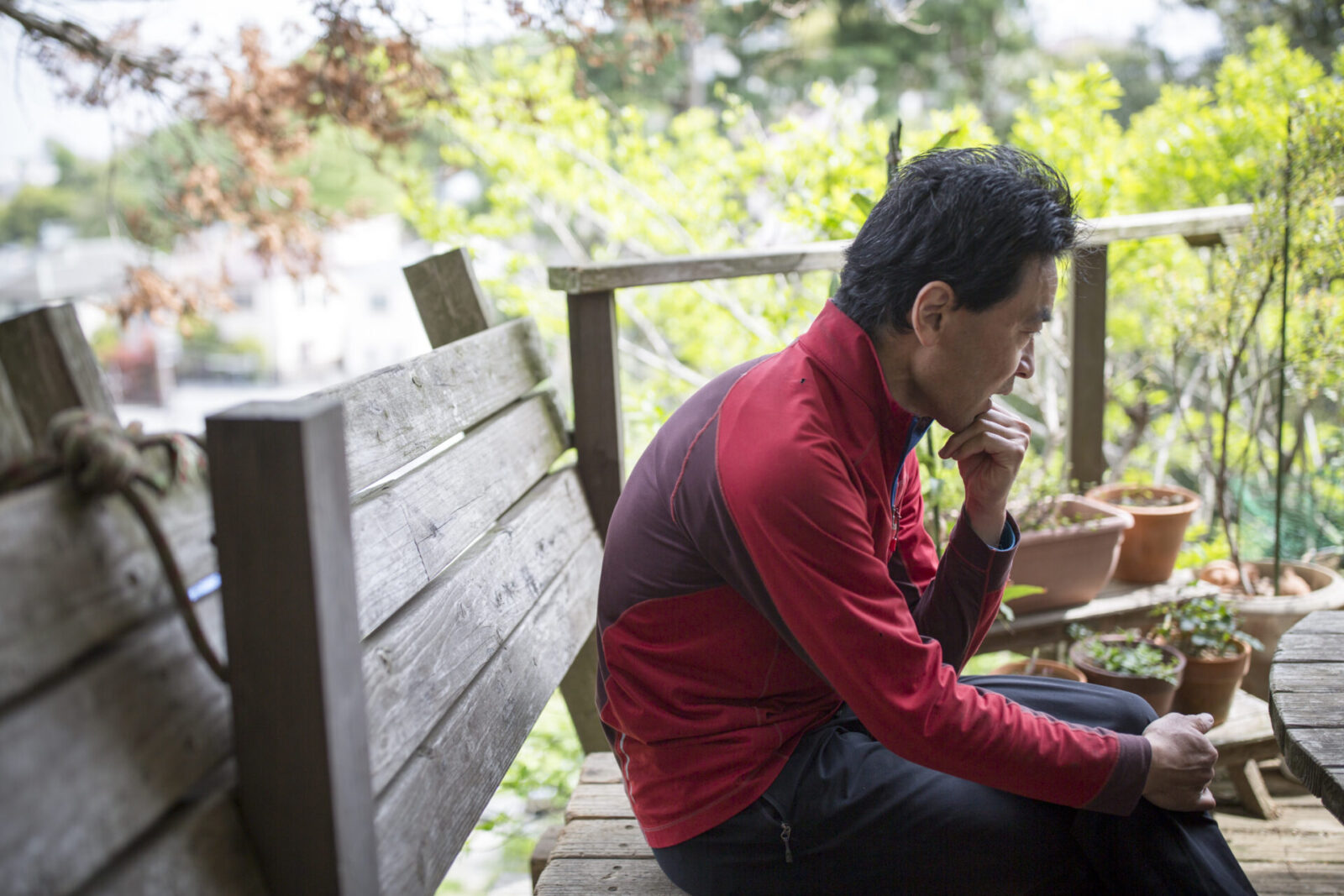
The bewildering experience of hunting wildlife
Hattori has been survival mountain climbing since his thirties. Because he only takes some rice and a few seasonings with him, he came face to face with the act of killing and eating wildlife during his time in the mountains.
“I had been fishing before, but it was the first time that I killed another animal in order to sustain my own life in the wild. The first time I caught a big trout in a stream deep in the mountains, I was overcome by a rush of emotions.”
“If I had not insisted on survival mountain climbing, I would not have had to kill that trout. All I had to do was bring a packet of ramen noodles. It was my selfish desire to climb a mountain relying solely on my own strength, and I questioned whether this desire justified the act of killing wildlife in the mountains.”
“At the same time, the trout in my hands was full of life and very beautiful. It looked and tasted delicious. There was a positive sensation of taking that life and making it a part of my own.”
To kill and eat in order to live. Hattori says that this experience brought on a sense of bewilderment as he experienced both positive and negative emotions towards taking life.
“I felt bewildered. At the same time, I was shocked to realize that it was the first time in my 30 years of life to experience such bewilderment. It was the moment I realized that I had never really known what it meant to consume food.”
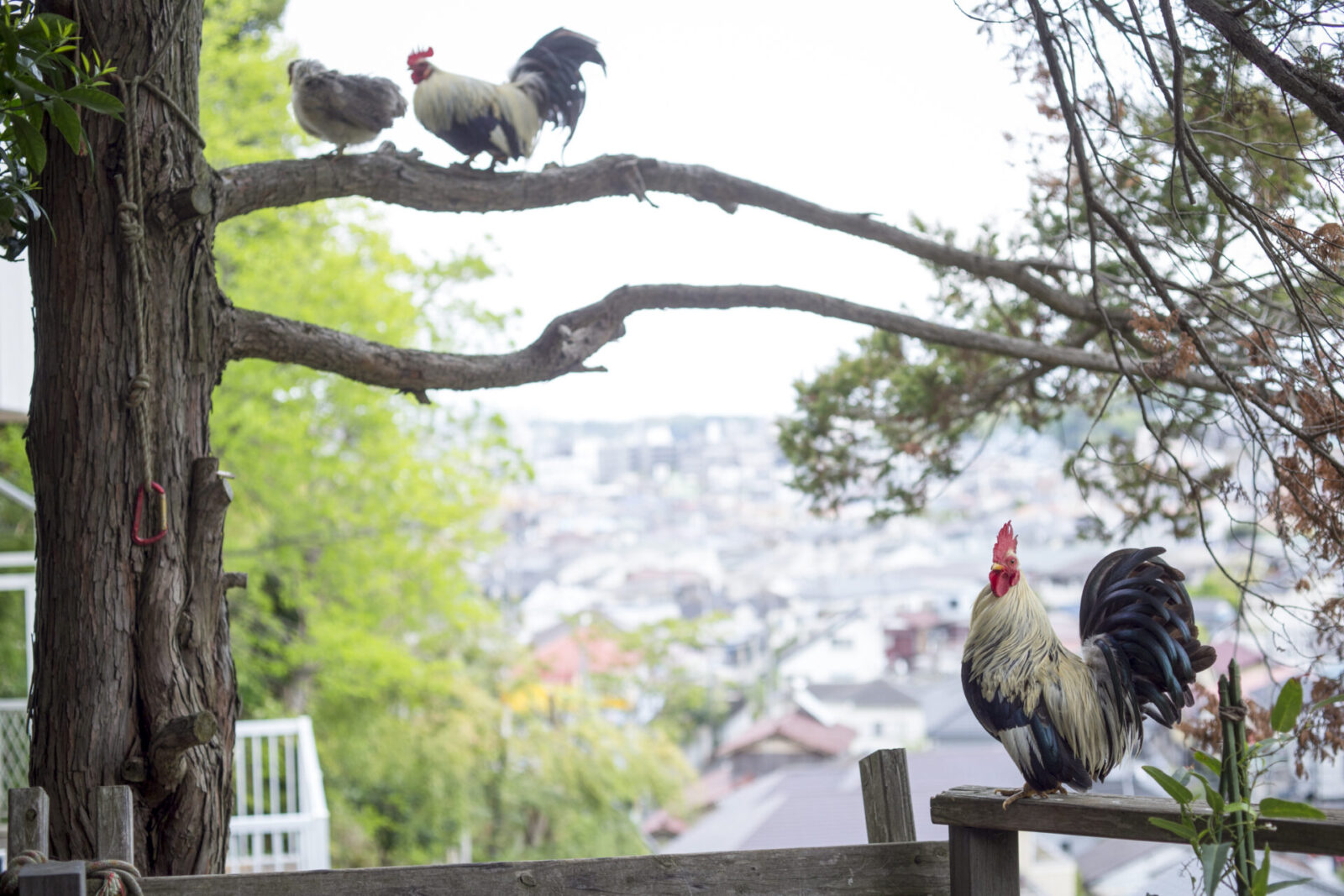
After his experience with eating wild food and facing the dilemma of what food consumption means through survival mountain climbing, Hattori got a hunting license at the age of 35.
“Even after I experienced the sensation of consuming ‘life’ in my experience in the mountains with the trout, when I returned home I found myself deliciously consuming beef or pork that was raised and killed by someone else. I could not justify that. I realized that if I were to continue to eat meat for the rest of my life, I needed to feel what I felt with that trout when I consumed meat as well.”
The first time Hattori shot and killed a deer was two years after he got his hunting license. Trout and deer. Having experienced taking the lives and eating the two creatures, what felt different?
“You can say it was the same, but of course there were differences. Deers are mammals, like humans, and the size and the warmth you feel from their bodies is completely different from trout. More than anything, one has a general idea of where a trout would be, but deer move around in the mountains so you can never be sure where you will find them. There is a larger coincidental aspect that is involved. You never know when and where you will encounter them. Because you are faced with an uncertain future, the impact you feel when you encounter a deer is much bigger.”
“In the moment that you pull the trigger of the gun, you are focused solely on releasing the bullet to strike the deer’s body. However, when the bullet hits the deer and you realize it is fatal, a lot of emotions flow through your mind. You question whether you are worthy of eating this creature, and you feel pity for it. Then you justify your act by thinking that this is what it means to consume life.”
“However, the biggest thought that comes to mind is that someday, you will die as well. Although the deer in front of you is dying a rapid death, you realize that you yourself, who took that life, is also slowly aging and moving toward death. Whether it is the trout, the deer or oneself, as a matter of course, all humans and all living things will die. As I am now middle aged and half way through life, I have become more aware of this fact.”
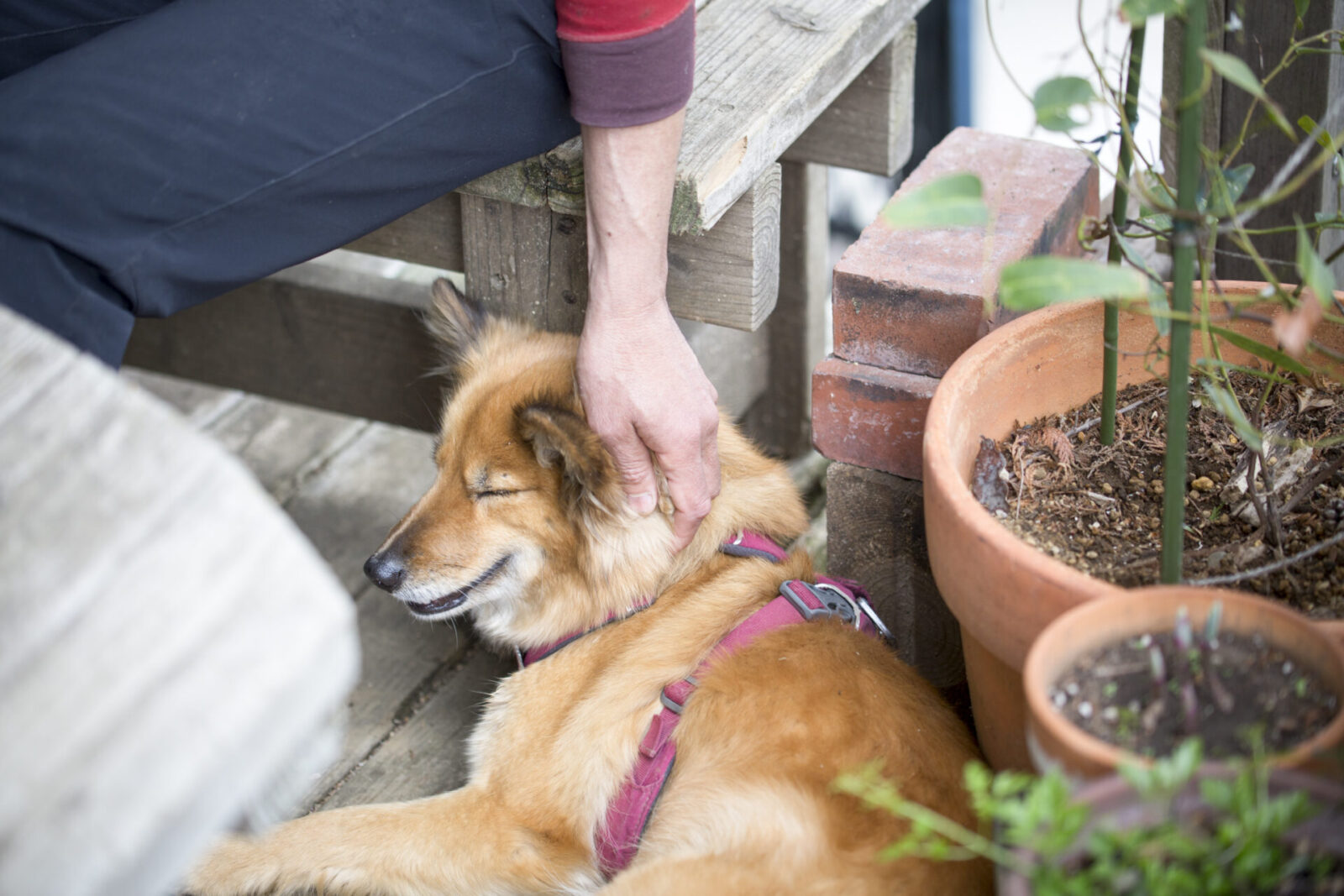
Living self-sufficiently and outside of economic systems
Through his experiences of confronting life and nature in survival mountain climbing and hunting, Hattori eventually turned his attention towards living self-sufficiently.
Three years ago he purchased an old farmhouse in an abandoned village in the outskirts of the Kanto region. The home was cut off from electricity, gas, water and other utilities. He now goes back and forth from his home in Yokohama and the farmhouse.
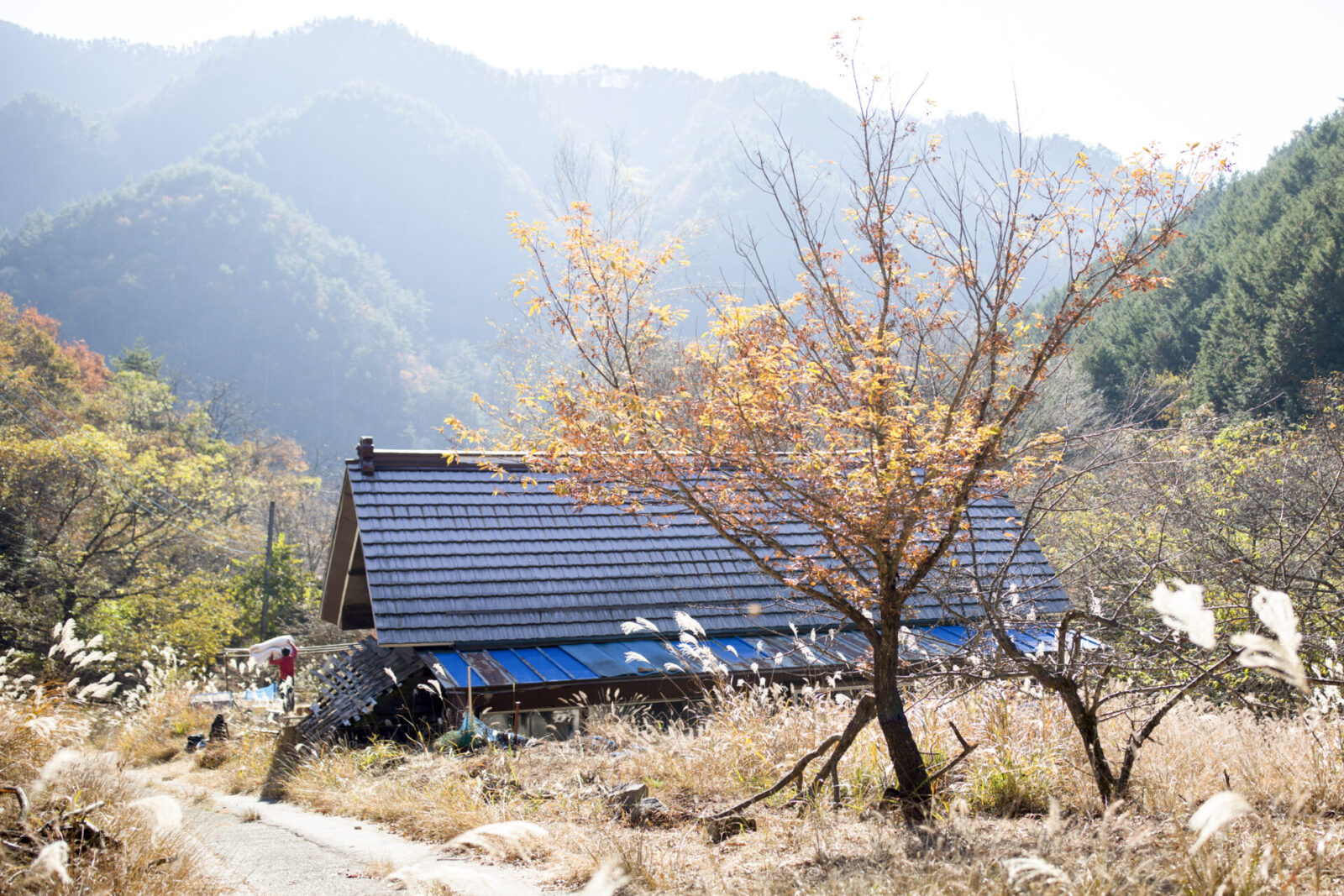
There are no other residents in the surrounding area for several kilometers. He draws water from a nearby stream, uses firewood as fuel and a small solar panel for electricity. His decision to start a self-sufficient lifestyle came from his experience in the mountains.
“I have done pretty risky mountain climbing since I was young, but to be honest, it is a scary experience. I always find myself asking why I put myself in such life threatening situations. However, if you turn that question around it is the equivalent of asking myself, why am I alive? How do I want to spend the time that has been given to me in this life?”
When I confronted this question, I realized that the meaning of life for me was not about making money, living in a luxurious apartment and buying one thing after another, or sitting on a sofa and consuming content created by someone else.”
For Hattori, living was more about the fundamentals of life.
Drinking water, obtaining fuel, gathering food.
These are all simple acts that sustain life, but all of these things cost money in our modern world. Our lives are built around an economic system. Hattori’s life in the abandoned village is an attempt to live away from these economic systems.
“I don’t have much faith in economic systems. When I am in the mountains, I don’t need to spend money in order to survive.”
“Procuring food and fuel are a fundamental part of living, but because we are busy making money, we are omitting the actual act of living. In fact, it seems that money is now the ultimate goal when it was supposed to be a means to an end. That seems strange, does it not? That is why I try to live as much as I can with my own two hands, without using money.”

The self-sufficient life in the farmhouse is not as stimulating as the days of survival mountain climbing. Hattori laughs as he says, “It is more refreshing than it is pleasurable.”
“I collect wood to heat my bath, prepare the soil for my garden and fix up the house. There is always a lot to do and honestly, it’s quite cumbersome. However, whenever I feel that way, it reminds me that living itself is cumbersome and I laugh. Because if you find living to be a pain, then that would mean it would be better to be dead.”
“Still, the self-sufficient lifestyle is fun. Rather than depending on money, you can live life in a more direct way. That is a lifestyle that I can believe in and I want to be an example to society that this way of living is possible.”
Hattori questions social standards, thoroughly contemplates life and creates his own alternatives. In his mountain climbing endeavors and everyday life, he explores the sensations of being alive in the moment and uses his own strength to pursue his adventures.
Photo:Ikuko Takahashi
Translation: Sophia Swanson
Born in 1977. Began working as a freelance editor and writer in 2002 for magazines, in-flight magazines, websites, and advertising. Specializes in domestic and international travel, and has written about 70 regions and countries. He wrote for the book “夢がかなう世界の旅” (World Travel to Make Your Dreams Come True) (Pia Corporation) among other books.
Yuko Souma is the director of Delightful LLC and was born in 1976 in Chichibu City, Saitama Prefecture. Souma began their career working as an assistant to editor and writers at a production company while studying at Waseda University’s Faculty of Letters, Arts and Sciences. In 2004, Souma was an editor and member of the launch team for the free magazine R25 at Recruit Co., Ltd. They left that role in 2010 and has since produced and edited for magazines, books, online publications, booklets for corporations and municipal governments, and owned media.
